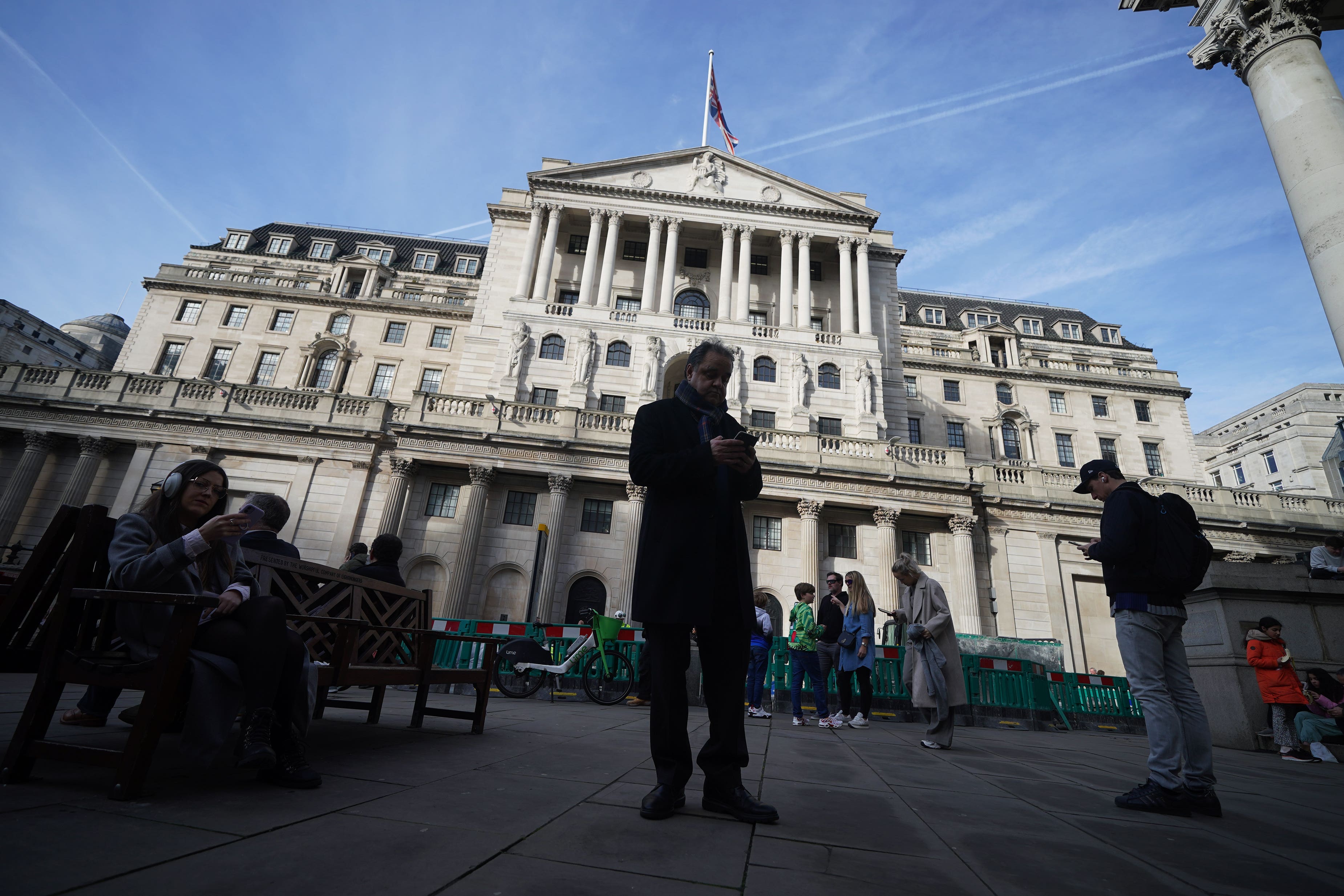Mortgage costs to jump for 3m more households, says Bank of England
The central bank stressed that UK lenders are still in a strong position to support households and businesses, even if the economic backdrop worsens.

Your support helps us to tell the story
From reproductive rights to climate change to Big Tech, The Independent is on the ground when the story is developing. Whether it's investigating the financials of Elon Musk's pro-Trump PAC or producing our latest documentary, 'The A Word', which shines a light on the American women fighting for reproductive rights, we know how important it is to parse out the facts from the messaging.
At such a critical moment in US history, we need reporters on the ground. Your donation allows us to keep sending journalists to speak to both sides of the story.
The Independent is trusted by Americans across the entire political spectrum. And unlike many other quality news outlets, we choose not to lock Americans out of our reporting and analysis with paywalls. We believe quality journalism should be available to everyone, paid for by those who can afford it.
Your support makes all the difference.About three million UK households are still set to witness hikes in their mortgage repayments over the next two years, the Bank of England said.
The Bank’s Financial Policy Committee (FPC) said this will include “very large increases” of more than 50% for the mortgages of around 400,000 households.
But the central bank stressed that UK lenders are still in a strong position to support households and businesses, even if the economic backdrop worsens.
The Bank’s latest Financial Stability Report showed that most households have already had an increase in their mortgage rates since borrowing costs began rising substantially in 2022.
Interest rates are at a 16-year-high of 5.25%, with the central bank voting to maintain the figure for a seventh consecutive meeting earlier this month.
But many economists have predicted they could reduce rates at the next vote in August.
Currently, around 35% of households with mortgages, or more than three million, are paying below 3% and are expected to see an increase between now and the end of 2026.
A typical household rolling off a fixed-rate mortgage before the end of 2026 is due to face a jump of around £180 a month, the report said.
It highlighted that an “increasing proportion” of households have been choosing to borrow over a longer period of time, reducing monthly repayments but leaving them with more debt to service over time.
Higher mortgage rates have resulted in many households and renters reducing their savings, the Bank found.
It added that the share of renters falling behind on payment increased to 16.5% in the first quarter of 2024, compared with 15.7% a year ago, after significant increases in rents year-on-year.
Survey data also found that “many renters and low-income households intend to run down their savings even further” in the next year to deal with the increased cost of living.
The central bank stressed that, despite pressure on household finances, the overall risk environment for the economy and financial sector is broadly unchanged.
The banking sector “has the capacity to support households and businesses even if economic and financial conditions were to be substantially worse than expected”, according to the FPC.
But there are “global vulnerabilities” for the sector, including “policy uncertainty” associated with upcoming elections across the world, including in the UK, the US and France in the coming months.
Financial markets also face the risk of a “sharp correction” to asset prices, which have risen sharply in recent years.
The report highlighted that high inflation or geopolitical changes could trigger a sell-off which could impact prices.
“Investors in financial markets are continuing to expect the economy to recover and inflation to fall,” the FPC said.
“They are placing less weight on risks, such as geopolitical developments or continued high inflation, that might cause weaker growth or interest rates to stay higher than expected.
“These risks make it more likely that there could be a sharp correction in asset prices that could ultimately make it more costly and difficult for UK households and businesses to borrow.”